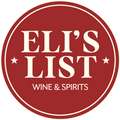Dijon, the beautiful capital of the Cote D’Or and the Burgundy region has been since Roman times a center for agricultural development. It was the place where the Dukes of Burgundy, acted as owners, managers and stewards of their vast lands. Through their norms and edicts they imposed the Pinot Noir, sent the Gamay grape to exile in Beaujolais and promoted the wines of the region. In the XIX century the Barons of Industry took over the city. New crafts and trades emerged: mustard, vinegar, confections and fruit distillates flourished and also viticulture reached unprecedented heights. The role of Dijon as the motor for the whole region has been incredible, and became universally acknowledge just last year.

In 2015 UNESCO recognized The Climats, Terroirs of Burgundy, as a World Heritage site. This recognition included not only vineyards, towns, estates and roads, but traditions, cultural events and the know how that represent more than a thousand years of interaction between man and the tiny parcels of land that gave identity to the wines. Also recognized were the cities of Beaune, as agricultural heart of the region and Dijon, as the political regulatory center that gave impulse to the formation of the Climats system.

Years before, and in order to prepare for the nomination, the city of Dijon purchased a large estate, in the outskirts of town, Domaine de la Cras: 140 hectares of forest, agricultural land and vineyards. With the acquisition of this land the city wanted to establish a green belt around town, create strong sub-urban agriculture and, above all, to have a made in Dijon wine, turning the city in a wine-making town, not only a center of administrative influence.
For the exploitation of the domain the city of Dijon had an open call. The City Counsel wanted to lease the land for 40 years, for a nominal fee of 2000 bottles of wine per year, with the specific condition that the agriculture had to be organic or biodynamic and that the domain would work simultaneously as a learning center. After a careful selection process, the land was adjudicated to Marc Soyard, a young vigneron, originally from the Jura, whose previous job at Jean-Yves Bizot’s estate in Vosne-Romanee, gave him enough experience and optimal credentials. Marc has adapted the natural philosophy he learned at Domaine Bizot. All of the vineyards are farmed organically with some biodynamic practices. Depending on the vintage, the reds are partial whole cluster or 100% whole clusters. All vinification is done with natural yeasts, and minimal addition of sulfur.
The wines are AOC Bourgogne, but since he is the only producer he was allowed the name “Coteaux de Dijon”.
At Eli’s List we are proud to feature:
Coteaux de Dijon Rouge Domaine de La Cras 2014 $32
100% Pinot Noir. 33 year old vines are manually. 1/3 of grapes are put whole cluster into wooden tanks without any SO2. Elevage in barrel for 15 - 18 months. No racking, fining, or filtering.
Coteaux de Dijon Rouge « Cras Monopole » Domaine de La Cras 2014 $45 100% Pinot Noir. 33 year old vines are manually. Whole cluster into wooden tanks without any SO2. Agingin barrel for 18 months. No racking, fining, or filtering.
Sorry, there are no products in this collection.



